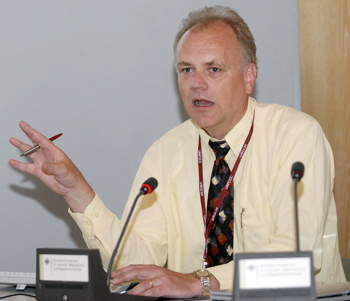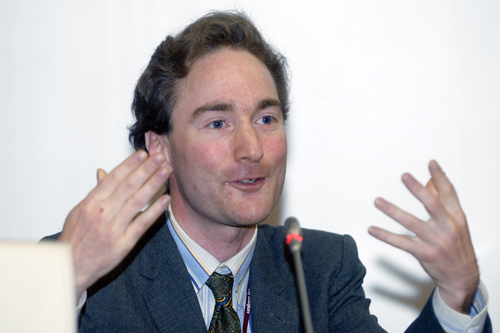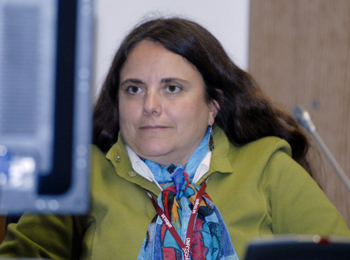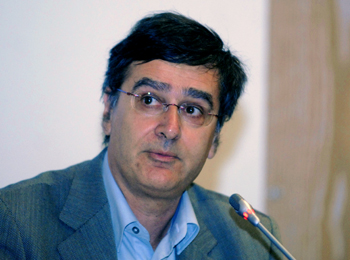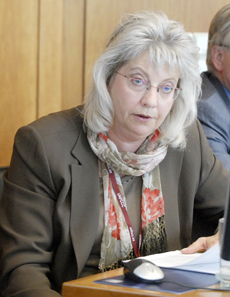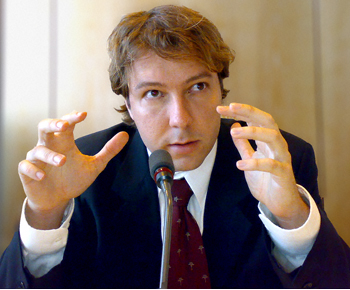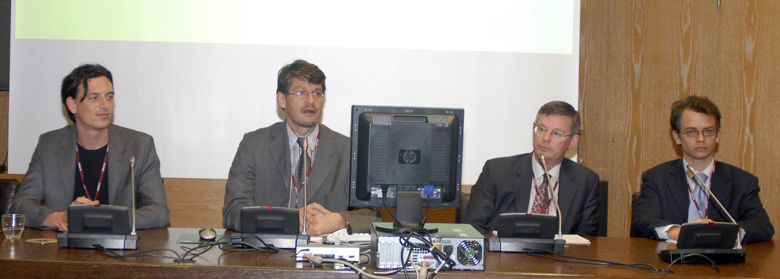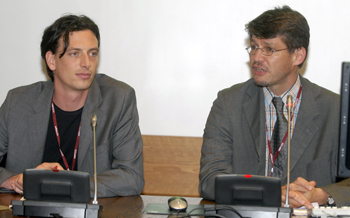 |
||
|
Published by the International Institute for Sustainable Development (IISD)
|
|||
|
A Special Report on Selected Side Events at the twenty-sixth sessions of the Subsidiary Bodies (SB 26) of the United Nations Framework Convention on Climate Change (UNFCCC)
|
|||||
| 7-18 May 2007 | Bonn, Germany | |||||
 |
|||
 |
|||
Events convened on Monday and Tuesday, 7 and 8 May 2007
|
|||
|
Connecting earth system science research to climate change policy Presented by the Earth System Science Partnership |
|||
|
Carolina Vera, University of Buenos Aires, Argentina, discussed regional analysis of future climate projections. She said regional projections, based on compound information from numerous models, are needed but are limited by computing capacity. She discussed the World Climate Research Program’s multi-model dataset developed for phase three of the Coupled Model Intercomparison Project (CMIP3), which was used to provide simulations for the Intergovernmental Panel on Climate Change Fourth Assessment Report. Vera said this dataset increased the reliability of projections, and provided a sound basis for the regional extreme event projections that are necessary as inputs into adaptation and planning strategies. She also discussed the techniques for refining models for local and regional projections, and the limitations of these techniques.
Hiroki Kondo, Japan Agency for Marine-Earth Science and Technology, presented on the Frontier Research Center for Global Change’s involvement in developing super-high resolution models that nest regional and global models and allow for detection of biases and meaningful downscaling of climate projections. He emphasized the importance of regional projections for adaptation studies. Ben Mathews, Université catholique de Louvain, noted that climate science and policy were currently disconnected, and emphasized the difficulty and importance of providing policymakers with information that allows them to understand the sensitivity of projections to various policy options. He underscored the need for a range of model complexities, with each level of complexity having an advantage depending on its use. Mathews presented his interactive “Java Climate Model,” focused on stabilization scenarios, which aims to overcome the limitations of “back of the envelope” calculations by developing a transparent and flexible tool that is calibrated from more complex models, but also allows the user to adjust parameters and observe the changes in model outputs. Martin Beniston, University of Geneva, Switzerland, discussed extremes in a warmer climate, with a focus on Europe and the Alps. He said that extreme events can be defined as “extreme” based on frequency, intensity and the extent of impacts, and noted the possible underlying causes and consequences of such events. The subsequent discussion focused on how tools can incorporate the responses of extreme events to policy options, uncertainties in regional climate models, and the dangers of oversimplifying models. |
|||
|
|||
|
|||
|
|||
|
LULUCF projects under JI: Will they be impossible? Presented by Joanneum Research |
|||
|
Bernhard Schlamadinger, Joanneum Research, highlighted land use, land-use change and forestry (LULUCF) under Joint Implementation (JI) and outlined possible project types under JI such as reducing emissions from deforestation, revegetation, and cropland, grazing land and forest management. He stressed the importance of focusing on projects that enhance carbon removal, but noted such projects are slower in sequestrating carbon.
He underlined possible projects that could improve forests management in existing forest by, e.g., enhancing regeneration, changing harvesting practices and switching to no-till management. On emissions from forestry, he noted projects on forest fire prevention and deforestation avoidance. Schlamadinger said that LULUCF activities can either reduce emissions by addressing sources or promote removal via sinks, and explained that sinks do not always remove greenhouse gases (GHGs). He concluded that JI LULUCF projects will: start generating credits as late as 2014; depend on the ability of the country to meet JI Track 1 requirements; and depend on the ability of the country to generate removal units (RMUs). Murray Ward, Global Climate Change Consultancy, recalled the negotiation process towards the first commitment period of the Kyoto Protocol. He noted that the Kyoto Protocol rules for JI were vague and said that JI Track 2 expanded the opportunity for good projects. He explained that the International Transaction Log (ITL) process allows for changes and improvements to be made. Robert O’Sullivan, CLIMATEFOCUS, underscored possible legal interpretations of the Marrakesh Accords regarding JI Track 2 projects and ITL, and questioned whether the Accords allow conversion of RMUs to ERUs for LULUCF. He noted that Track 1 eligibility for JI has more requirements while Track 2 has three criteria, which are the need for: being a party to Kyoto Protocol; having calculated the country’s assigned amount; and having a national registry in place for tracking the country’s assigned amount. O’Sullivan noted that for accommodating JI LULUCF projects, parties need to re-examine the ITL rules and procedures. Martin Burian, GFA Envest, outlined forest management projects in the Russian Federation. He said such projects allow for a conservative calculation of ERUs based on a solid baseline contained in forest management plans, and tackle leakage and permanence issues. Burian concluded that there is significant potential for forest projects in JI countries and they should not be bound to registered methodologies. In the ensuing discussion, participants debated: evidence of reduced deforestation and the generation of credits; submission of accounts under JI Track 2; and the need to use ERUs for LULUCF projects. |
|||
|
|||
|
||
|
Click the above button to go back to our ENB main coverage
|
||
|
|
|
|
|
||
|
